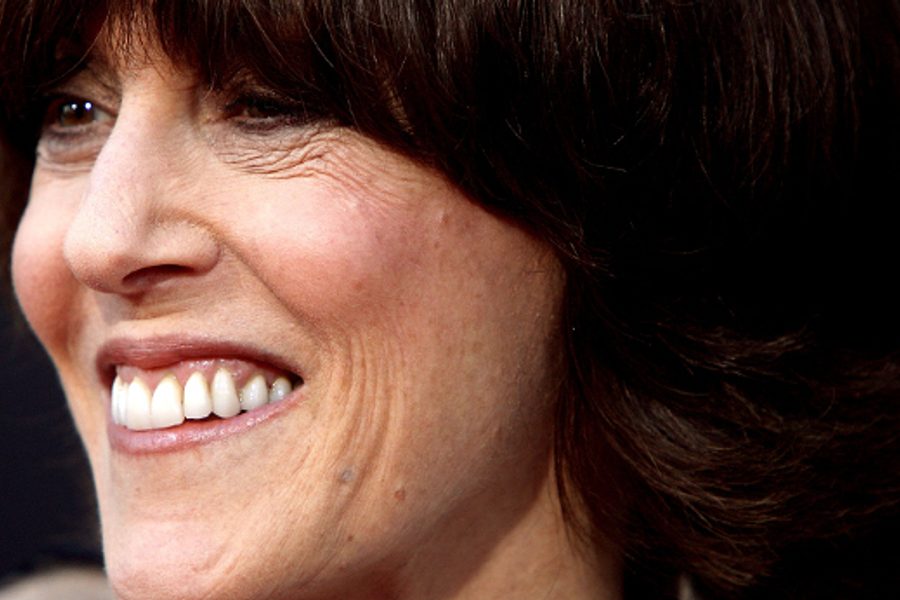Nora Ephron Finally Gets the Credit She’s Always Deserved
We should’ve listened to our mothers.
Jude Ellison Sady Doyle

In the midst of waves of loving obituaries for and reminiscences of writer and director Nora Ephron, who died last week at 71, it’s worth remembering something: For many years, Ephron’s name was synonymous with bad taste. To be precise, the bad taste of sentimentality, schmaltz, continual focus on intimate relationships, and unrelenting insistence on happy endings — the poor taste of the “chick flicks” and romantic comedies of which she was one of the foremost purveyors. Which, since we’ve already uttered the dreaded “chick” word, we may as well call by name: The poor taste of writing for women.
Ephron had a pedigree that any writer might admire. She was a reporter for the New York Post and a columnist for Esquire. Her essays were funny, and hard-edged enough to leave permanent welts on her targets — “The Fountainhead Revisited,” her take on Ayn Rand, is funny enough to provide a cornerstone for the entire Making Fun Of Ayn Rand industry. (It also contains some lines that no contemporary feminist would dare — after reading The Fountainhead as a teenager, Ephron wrote, “I spent the next year hoping I would meet a gaunt, orange-haired architect who would rape me. Or failing that, an architect who would rape me. Or failing that, an architect.”)
But I’ve always thought of Ephron — as I suspect many people do — as the Sleepless in Seattle lady, or the woman who wrote When Harry Met Sally. And I avoided and dismissed her, for that precise reason. Nora Ephron was unworthy of serious feminist consideration, I thought, because she was just too girly.
I was with my mother when the news of Ephron’s death broke. In the days afterward, my mother described Ephron as a feminist role model for people who couldn’t connect with the more politicized manifestations of second-wave feminism. “People like Gloria Steinem,” my mother said, “they didn’t seem to understand about marriage and having children. They didn’t know what it was like to be in that world. Nora Ephron knew about that world, because she was in it. She wrote from it. And she got burned by that world — really burned. And she wrote about that, too.”
My mother was referring to Ephron’s 1983 novel Heartburn, a lightly fictionalized account of her divorce from journalist Carl Bernstein, which evidently enraged Bernstein enough that he threatened to sue. Roger Ebert’s review of the movie adaptation (or of Ephron herself, really) was anything but kind: “After we’ve eviscerated the philandering husband, why stop before we get to the part where the ex-wife violates her own privacy and that of her children in a bid for revenge, the best-seller list and a sale to the movies?”
But the boldness of the gesture evidently resonated with women going through their own messy divorces. Describing the reaction, Ephron said, “Well, it sold a lot of books. I think there were many men who were made very nervous by it.” Including, one suspects, men who reviewed movies for the Chicago Sun-Times.
In fact, Ephron did make overtly political statements. But even her “light” work frequently addressed topics that we political types still work to cover in an appropriately movement-building manner, such as faked orgasms, or women’s difficult relationships with their own aging bodies. She simply came at these topics with a lightness that removed their sense of taboo. Instead of writing about the sociopolitical reasons behind the devaluation of female pleasure and the simultaneous obligation to perform it for male approval, Ephron set Meg Ryan down in a diner and let ‘er rip.
Ephron managed to be ahead of the curve on several other feminist talking points, as well. Before we had a widespread discussion on women in comedy, Ephron was a woman who made her name writing humor pieces. While feminists were protesting the lack of female directors, or their marginalization, Ephron was directing. And yet, the stigma associated with her particular kind of humor and filmmaking— sticky, gooey, mushy, middle-brow, feminine — prevented her from ever taking pride of place in those discussions.
In fact, the marginalization of Ephron’s work had as much to do with class, and age, as it did with gender. She wrote not just for women, but for middle-class, middle-aged women — a demographic widely ignored or viewed with disgust by the media, except for that small segment thereof that aspires to write the perfect Swiffer ad. Just as Ephron could have been Joan Didion, had she adhered to a colder, more self-consciously sophisticated tone, she likewise could have been Woody Allen, had her depictions of New York neurosis and heterosexual longing been aimed more exclusively toward the rich and male. But she stuck with the girls (and not just the young ones), and she didn’t bother to make her work difficult or inaccessible — her films, at least, were always designed to be widely liked. This is not the way to get oneself recognized as a Serious Artist.
But it is a way to build a distinctive body of work. And, in the wake of her death, that work is being lauded — often by young, female writers who cover that same terrain of intimacy and comedy, including Emily Gould and Girls creator Lena Dunham. It’s a shame that this critical re-evaluation has taken so long, and that Ephron couldn’t have seen more of it. As Ephron herself might have pointed out, it all could have been resolved much sooner if we had listened to our mothers.
Jude Ellison Sady Doyle is an In These Times contributing writer. They are the author of Trainwreck: The Women We Love to Hate, Mock, and Fear… and Why (Melville House, 2016) and was the founder of the blog Tiger Beatdown. You can follow them on Twitter at @sadydoyle.








